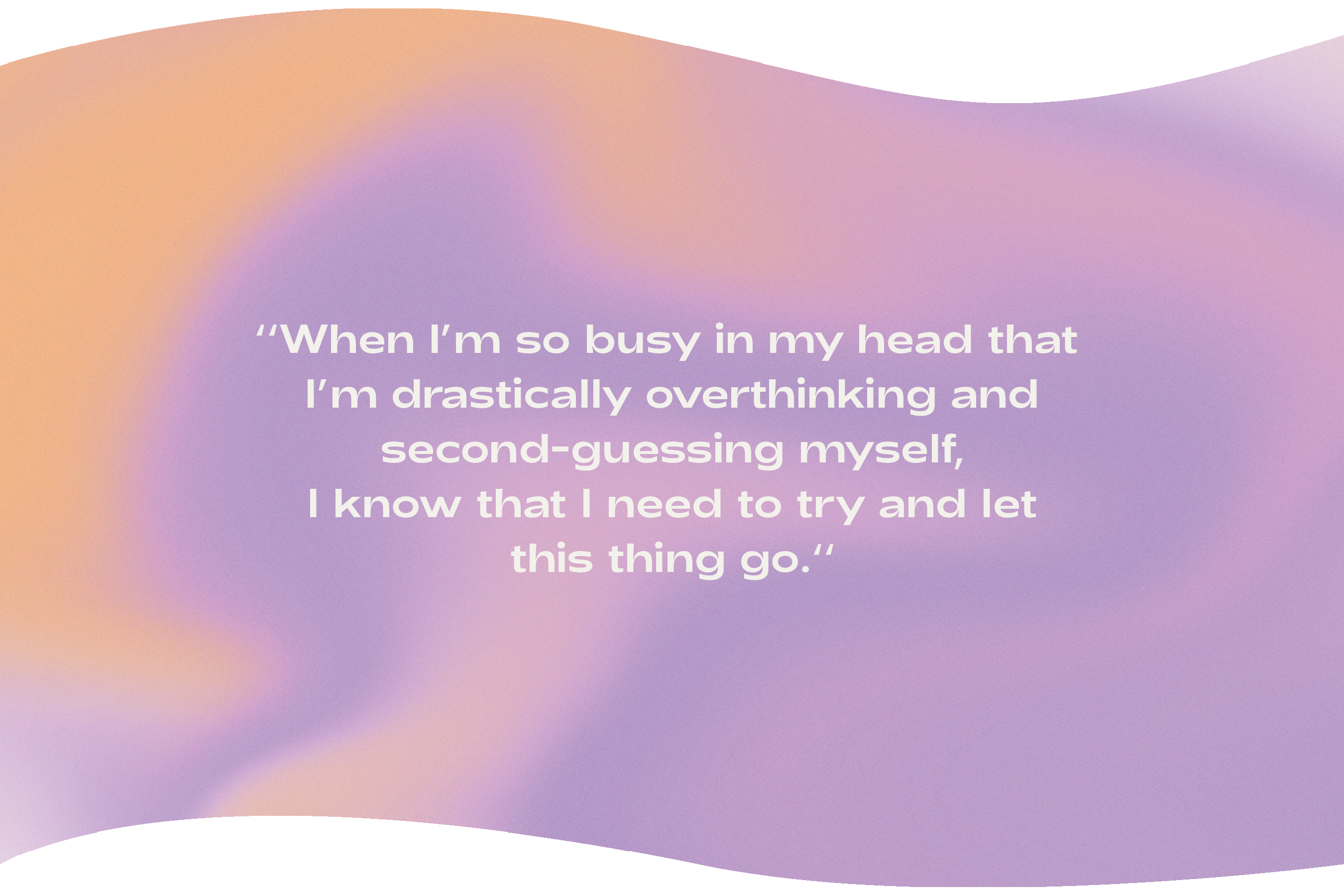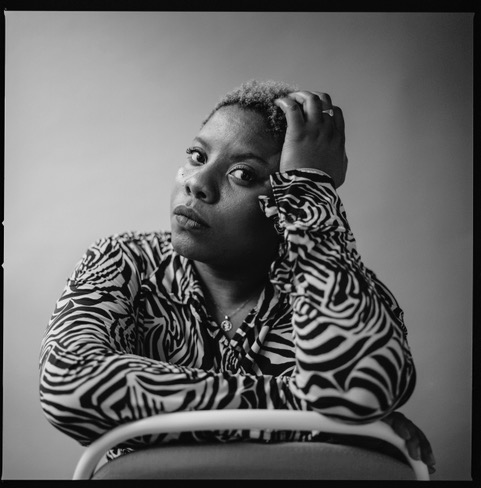Artist-curator Georgina Johnson opens up about her relationship with work, the need for drawing work-life boundaries, and what young creatives in similar spaces and positions should watch out for.
Conversations around creative balance often lead back to the notion of work-life boundaries. This notion is arguably charged with dated assumptions, including the idea that life starts where work ends, and that personal and professional affairs shouldn’t intersect. It also, however, points to the ongoing importance of cultivating spaces that are solely about resting, nurturing our wellbeing, and restoring our energies. For employed creatives with full-time jobs, working hours offer a template for demarcating those spaces. Still, for freelancers, small company owners, or even students, the boundaries are often blurry, and keeping work and recreation from getting excessively enmeshed depends on one’s ability to draw the line. In other words, balance and boundaries are more nuanced and arbitrary than we tend to think, and figuring out what works and what doesn’t is all but straightforward.
For Georgina, who works on a project basis, creative balance is rooted in care. Her first book, The Slow Grind: Finding Our Way Back to Creative Balance (2020), is a collection of essays, think pieces, and conversations exploring the interconnectedness of individual, collective and environmental care in the context of creativity. The collection was inspired by Georgina’s own experience in the fashion industry and evolved out of the manifesto ‘Slow Fashion to Save Minds’, which she wrote in collaboration with mental health activists Sara Radin. The book is also an inquiry into future-oriented approaches to creative life and into care as a radical premise for a more equitable creative landscape. In addition to curating The Slow Grind, Georgina’s creative endeavors range from artist commissions to leading The Laundry Arts Program, a series of initiatives aimed at supporting the experiences of women, Black and POC artists.
This is the first episode of Creative Approaches, where experienced creatives share reflections and actionable advice on navigating their careers. By highlighting different views and approaches, we hope to foster a more nuanced understanding of creative work.


“I’m still learning what balance means to me. Its meaning has shifted constantly through the years depending on where I have been in my work or in my life. Both do collide very naturally, and yes, it is about figuring out your own parameters. I think before, when I was in an incredibly work-intensive part of my life, I had no work-life balance at all. I realized then, and continue to untangle the knowledge and depth to which my self-hood was wrapped up in my work. My value felt wrapped up in my work and that is something I have to constantly un-do. But balance now, on the flip-side of having those times, really means leisure (in terms of time) and discipline. Both of which I will probably always be a student of. But I feel good in myself when I have time to do something the way I want to and even better when I tell myself that I’m not doing any more work. Work-life balance also more recently means understanding when life has to trump work. It’s kind of hard for me to practice this consistently because, again, I’m unraveling the problem of value, but speaking to friends and family about these dilemmas and letting the truth of what really needs to take precedence—usually, health and heart matters—seep in gets me there. So I guess work-life balance is about compassion.”

“The need to draw a thick boundary line for me personally will always be when in some way—somatically/mentally/physically—my health is in jeopardy. That is a baseline. When I’m so busy in my head that I’m drastically overthinking and second-guessing myself, then I know I need to try and let this thing go. Maybe I need to delegate, draw on the expertise of someone else—essentially get out of my own head and away from my own perspective. Often it’s a mixture of doing the latter and then going to a gallery, cooking, walking, being outside, being with friends, or being alone, but away from the work. I think that’s how these boundaries can be affirmed, in knowing when to say ‘no’ to yourself. It’s not always easy and it took time to recognize when it was necessary. Sometimes, it’s not even about leisure. It’s about pleasure. It’s about seeing the other parts of your life not as “a break from work”, but as important and necessary for you to thrive and learn about yourself.”

“In terms of achieving or marking a boundary, it is different for everyone but for me, it starts with space. So, for instance, in the evening I never turn on the big light in my room, I use soft and warm lights, which relax my senses and help signal to my brain that this is the place I need to relax and wind down. My studio space is bright and airy and I try to decide in my head that when I am going to my studio I am going to make art, explore, make mistakes, and hopefully do less computer work. I try to compartmentalize what I want to do in the spaces I place my body, in regard to the different strands of my practice as an artist-curator.”
“In terms of safeguarding your mental health and what to watch out for, lack of sleep is at the top of my list – because lack of sleep is no joke. There is this hustle, grind, repeat dynamic and messaging that is constantly being fed to us and we are forgetting that we are literally animals, we are not machines. That’s why The Slow Grind is titled The Slow Grind because I wanted to provide the antithesis to all of this BS.”
“Also watch out for what you center your conversations around. If you start growing apathetic to other people’s things, because you are so focused on work and grinding, etc., you are really lacking foresight because people need people. You will always need a friend, so be a friend. Be honest with your friends when you are struggling. Even if you are struggling not to think about work, or your progression or whatever. Maybe they can help you get to the root of it. But maintaining good intimate relationships is key to safeguarding your mental health, because this is a key mode of care.”
“Watch your thoughts. As someone that has an enduring mental health condition, Bipolar Disorder, this is incredibly important for me. When I am going downhill in my mind, my thoughts towards myself do get incredibly critical, intrusive, and sometimes aggressive. This is also something that I have to learn again and again to catch these thoughts out. Get into the habit of catching a negative thought out and repeating something positive and affirming over yourself. When you are used to working so much, you actually don’t pay attention to what your mind is feeding on and it can get messy and feel precarious, especially in the creative industries, but cultivating mental strength is ongoing.”
“Therapy has helped me in terms of holding a mirror up to some of my self-talk and life experiences, as well as my behaviors. Learning to be vulnerable with the people in my life and articulate how I am feeling about things helps me get to the root of a lot of tension and then something else opens up. Trying new things and making mistakes broadens the parameters of my practice because it humbles me and excites me. It also helps me be less perfectionist and more open to the natural flow of things and is often the starting point for collaboration. Journaling helps and trying to discipline myself into journaling when things are good, not just when they are bad. Noting down little things that I am proud of randomly as much as I remember to. I picked some of these things up through learning about myself in hindsight after long periods of BP episodes when I felt like a ghost. It doesn’t all come at once, but I do think that talking in the way and through the means that speaks to you is the starting point. Be easy.“
Georgina Johnson is a London-based artist, writer, curator, and futurist. Her work examines the relationship between social and climate justice with attention to the interdependent nature of individual and collective wellbeing in the context of creativity. This theme is also the central concern of her first book, The Slow Grind: Finding Our Way Back to Creative Balance; a collection of essays, conversations and think-pieces featuring leading-edge thinkers and practitioners from across the climate and creative realms. The Slow Grind contributors is as far-reaching as it is powerful and includes former senior curator at The Design Museum Sumitra Upham, artist Juno Calypso, curator Francesca Gavin, biotechnologist and material researcher Guilia Tomasello and Kimberly Jenkins, Ryerson University professor and founder of the Fashion and Race Database, among others.
You can order a copy of The Slow Grind here.
Graphics: Emely Wensky
Photography: Adama Jalloh and Edvinas Bruzas

